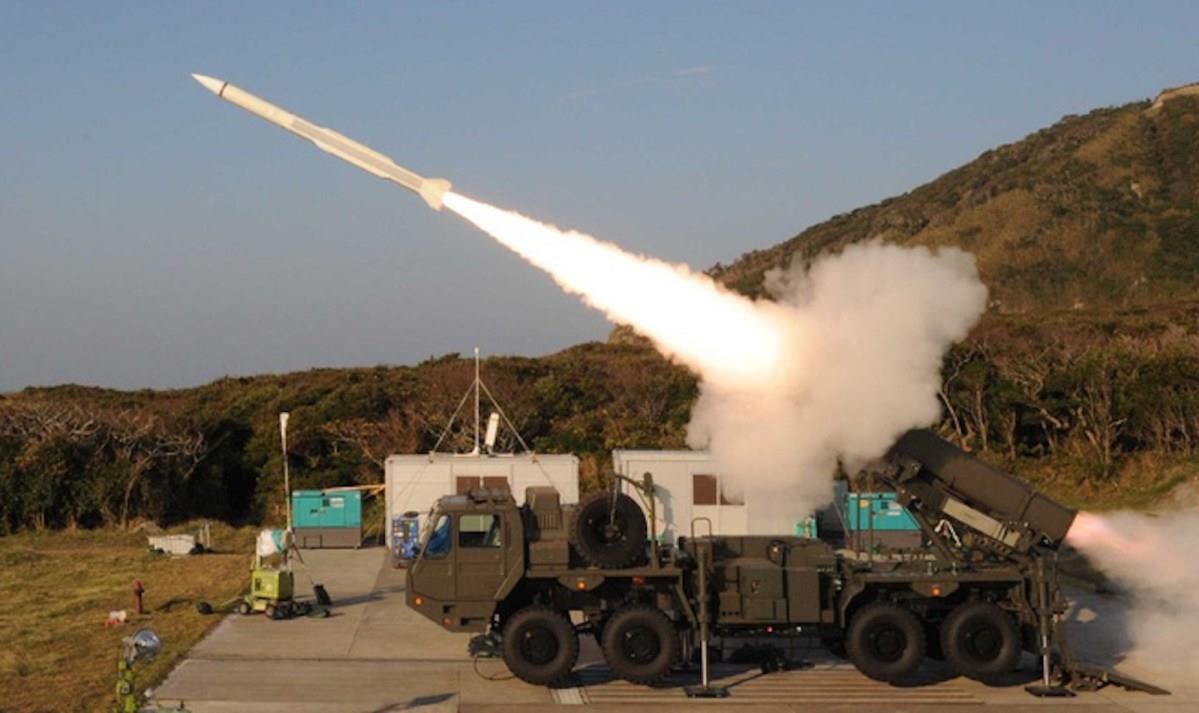(MENAFN- Asia Times) Japan aims to develop a hypersonic missile interceptor by remodeling its surface-to-air missiles (SAMs) to fill gaps in its missile defenses against China and North Korea's fast-evolving hypersonic threats.
at Tokyo plans to overhaul its Type-03 SAM, which first entered service in 2003, to intercept hypersonic glide weapons. It aims to upgrade the Type 03's launch software by 2026 and start mass production of upgraded missiles by April 2029, the report said. Japan first upgraded the Type 03 in 2017 to improve its capabilities against low-flying and fast-moving targets.
The Japan Times report cites a Japanese Self-Defense Force (JSDF) senior official saying that it is difficult for Japan's current missile defense capability to intercept hypersonic glide weapons, which fly at five times the speed of sound on irregular trajectories.
Future upgrades will aim to enable the Type 03 to detect, track and predict the flight path of hypersonic weapons, the report said, noting that it was unclear if the upgrades will be effective as hypersonic weapons technology is steadily advancing.
The hypersonic-specific upgrades contrast with Japan's earlier plan to extend the range of its anti-ship missiles to destroy China and North Korea's missile arsenals.
that Japan aims to upgrade 1,000 Type 12 subsonic anti-ship missiles to hit China and North Korea's missile facilities. The missiles are to be deployed by 2024 in Japan's Southwestern and Kuril Islands and can be launched from ships, aircraft and land-based launchers.
that hypersonic missile threats and potentially ineffective US missile defense systems may have motivated Japan to take a pre-emptive stance against China and North Korea's missile arsenals.
However, a strategy based on a pre-emptive strike may lead to an uncontrolled spiral of escalation between Japan, China and North Korea, potentially bringing external players such as the US, UK and Australia into the fray. Japan thus needs to bolster its missile defenses to shoot down incoming hypersonic weapons rather than risk firing the first shots of a potential regional conflict.
Japan has considered other options to upgrade its missile defenses against hypersonic weapons. that the US approved the sale of 32 Standard SM-6 Block I interceptor missiles to Japan in a US$450 million transaction aimed to bolster its ally's missile defense capabilities against China and North Korea's hypersonic weapons.

An SM-6 missile launch. Photo: Facebook / Military and Space Electronics
However, the latest SM-6 version, the SM-6 Dual, has only nascent capability against hypersonic threats and questionable effectiveness against maneuvering hypersonic targets. In addition, that the Patriot missile system used by Japan may be unreliable in actual combat operations, suffer from late interception and have problems with target discrimination.
Japan has also revealed plans to build dedicated missile defense ships that Japan is planning to spend US$7.1 billion on a sea-based version of the Aegis Ashore system, a surprising reversal of its 2020 decision to scrap the system's land-based version. Japan plans to build two such destroyers, comparable in size to an aircraft carrier.
According to Japanese Defense Minister Yasukazu Hamada, building destroyers of such proportions is the only way to mitigate its swaying at sea while the Aegis Ashore tracks and destroys missile threats.
The decision may be based on questionable logic, however, as it uses the same Aegis Ashore system Japan rejected in 2020, potentially due to its ineffectiveness against highly-lofted ballistic missile attacks.
Moreover, keeping Aegis-equipped destroyers on station round-the-clock is challenging compared to land-based missile defense sites that can be maintained at constant readiness. The behemoth destroyers would also no doubt be priority targets for China and North Korea's anti-ship ballistic missiles, cruise missiles and hypersonic weapons.
Japan is also looking at railguns as an alternative to missile-based defense systems. Unlike traditional powder guns, railguns use electromagnetic energy to propel projectiles, using sheer kinetic energy to destroy targets.
that Japan's Ministry of Defense had announced plans to develop railgun technology to defeat hypersonic threats from China, North Korea and Russia. Japan has allocated US$56 million in 2022 for railgun research, up from US$8.6 million in 2016. The research aims to develop a railgun that can fire a projectile at six times the speed of sound.
Railguns have several advantages over missiles, such as hypersonic projective velocity, substantially lower costs per round compared to interceptor missiles, lack of dangerous explosive filling in their projectiles and immunity to line-of-sight and weather conditions.
But despite these advantages, railguns require massive amounts of power per shot. Moreover, although Japan's nuclear energy sector can provide power for land-based railgun batteries or design compact nuclear reactors for shipboard use, nuclear energy has a tarnished image in Japan due to the 2011 Fukushima Daiichi disaster.
Japan's efforts to develop its missile arsenal ultimately aim to reduce its current overreliance on US security guarantees without upending the status quo on its alliance with the US while expanding its deterrent options.

China flaunts its hypersonic prowess in the Dongfeng-17 hypersonic glider during a military parade in Beijing in a file photo. Photo: AFP
Japan's missile defense system may reduce its reliance on potentially ineffective US-made weapons systems while avoiding the need to strike China, North Korea and Russia to destroy the latter's missile arsenals, a move that can risk serious escalation.
It may also be Japan's first step in improving its deterrence via denial, in which strong defenses substantially decrease a missile attack's chances of success while increasing costs for the attacker to the point of unfeasibility.
However, should Japan judge the missile threats from China, North Korea and Russia to be too severe for its missile defenses to handle, and if for any reason the US in future withholds military assistance, Japan will have a pre-emptive strike option.























Comments
No comment